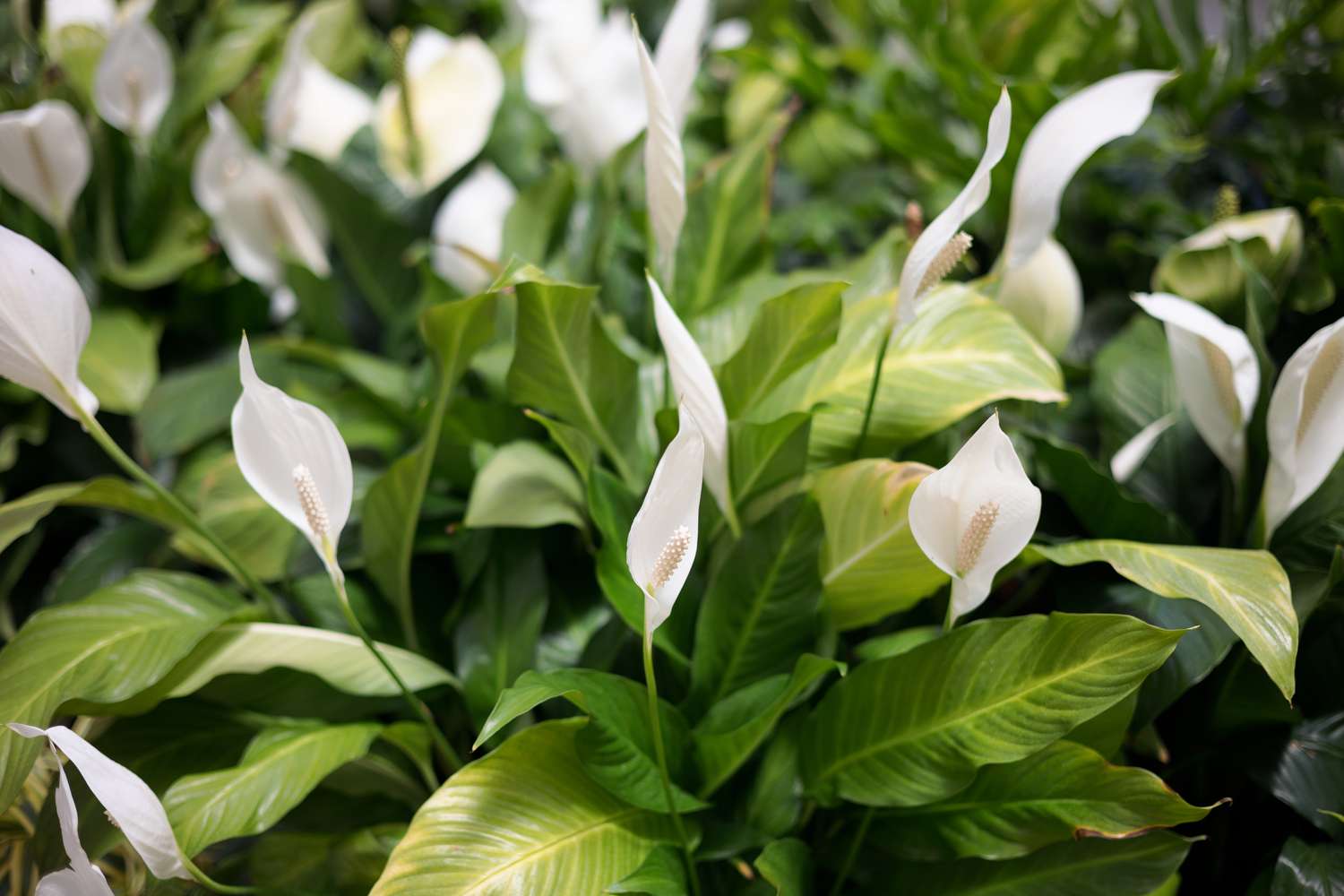The Peace Lily (Spathiphyllum) is one of the most beloved indoor plants for a reason. It offers lush, tropical foliage and elegant white blooms, all while quietly filtering toxins from the air. This plant is both beautiful and expressive—it tells you when it needs something, and with a little attention, it rewards you with vibrant leaves and graceful flowers.
Here’s how to care for a thriving Peace Lily at home, including where to place it, how to keep those blooms coming, and what to do when the leaves start drooping or browning.
Table of Contents
- Soft Light, Strong Growth: Finding the Right Spot for a Peace Lily Indoors
- Let It Tell You: A Watering Routine That Works With the Plant’s Signals
- Keeping It Comfortable: Temperature and Humidity Preferences
- Fertilizing for Flowers: When and How to Feed a Peace Lily
- Repotting and Refreshing: How Often to Change Its Home
- Best Place in the Home: Where Peace Lilies Look and Feel Their Best
- Caring for Peace Lilies Outdoors: When They Can Spend Time Outside
- Common Peace Lily Problems and How to Fix Them
- Final Thoughts
Soft Light, Strong Growth: Finding the Right Spot for a Peace Lily Indoors
Peace Lilies prefer bright, indirect light. A spot near an east-facing window is ideal.
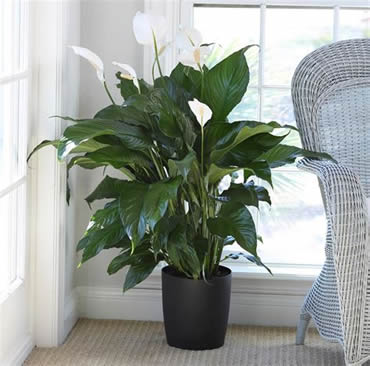
They can also tolerate lower light, though they may bloom less often in dim rooms.
Avoid direct sun, which can scorch the leaves and turn them pale or crispy.
If the leaves are growing well but no flowers appear, try moving the plant to a brighter location.
Let It Tell You: A Watering Routine That Works With the Plant’s Signals
Peace Lilies like consistently moist soil, but they’re sensitive to overwatering.
Water when the top inch of soil feels dry or when the plant starts to droop slightly—it will usually perk up within a few hours after a drink.
Always use a pot with drainage holes and empty any standing water from saucers to prevent root rot.
Peace Lilies are also sensitive to chemicals in tap water, so filtered or distilled water is best, especially if you notice browning tips.
Keeping It Comfortable: Temperature and Humidity Preferences
Peace Lilies thrive in temperatures between 65°F and 80°F and don’t like sudden drafts or cold rooms.
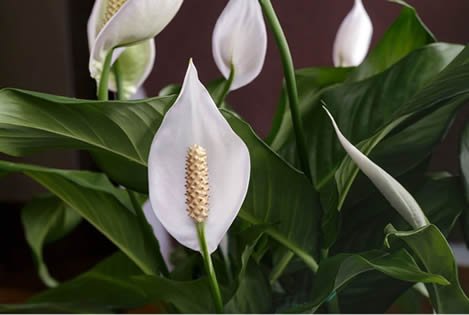
They prefer medium to high humidity and can struggle in dry indoor air, especially during winter.
Mist the leaves regularly or place the plant on a pebble tray to keep humidity levels up.
You can also group it near other tropical plants to create a more humid microclimate.
Fertilizing for Flowers: When and How to Feed a Peace Lily
Feed your Peace Lily every 4 to 6 weeks during spring and summer with a balanced, diluted liquid fertilizer.
Over-fertilizing can lead to salt buildup, which may burn the leaves.
Use a good quality 20-20-20 fertilizer, like this one or a 10-10-10 fertilizer, such as this one,
You can skip feeding in fall and winter when the plant naturally slows down.
If blooming has stalled, a light dose of bloom-boosting fertilizer with higher phosphorus may help encourage new flowers.
Repotting and Refreshing: How Often to Change Its Home
Peace Lilies don’t mind being slightly root-bound, but if you notice slower growth, yellowing leaves, or roots pushing out of the pot, it might be time to repot.
Choose a container just one size up with fresh, well-draining potting soil.
The best time to repot is in spring or early summer, when the plant is actively growing.
Best Place in the Home: Where Peace Lilies Look and Feel Their Best
Peace Lilies are perfect for living rooms, bedrooms, or bathrooms with indirect sunlight.
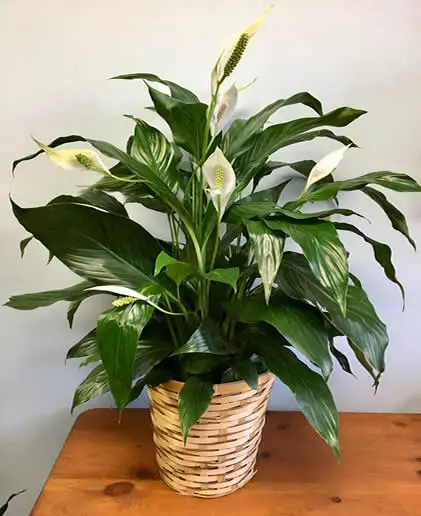
They also thrive in home offices and entryways where soft light and a little extra humidity are available.
Their sculptural leaves and white blooms bring a calm, serene energy wherever they’re placed.
Caring for Peace Lilies Outdoors: When They Can Spend Time Outside
In warm, humid climates (zones 10–12), Peace Lilies can be grown outdoors year-round in shaded or partially shaded garden beds or containers.
In cooler climates, they can be placed outside in the shade during the warmer months but must be brought back indoors before temperatures drop below 55°F.
Keep the soil evenly moist, shield the plant from strong wind and sun, and inspect it for pests before moving it back inside in the fall.
Common Peace Lily Problems and How to Fix Them
Drooping leaves are usually caused by underwatering, but can also happen when the roots stay too wet
Fix it by checking the soil—if it’s dry, water thoroughly; if it’s wet, let it dry out and reduce watering frequency
Brown leaf tips are typically the result of dry air, salt buildup, or fluoride in tap water
Fix it by using filtered or distilled water and increasing humidity with misting or a tray of pebbles
Yellowing leaves often indicate overwatering or poor drainage
Fix it by letting the soil dry more between waterings and ensuring the pot drains well
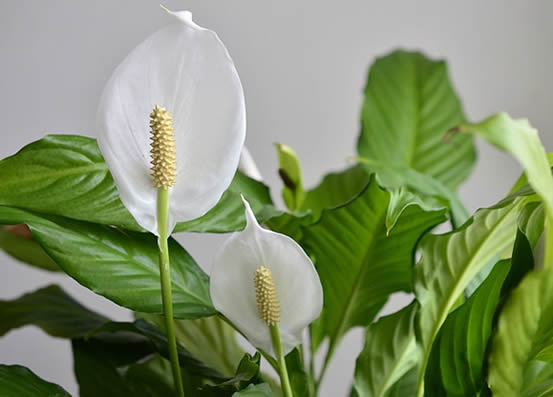
Lack of flowers may be due to low light or infrequent feeding
Fix it by moving the plant to a brighter location and feeding lightly during the growing season
Pale or scorched leaves can be caused by too much direct sun
Fix it by moving the plant to a spot with soft, filtered light
Mushy stems or foul smell from the soil suggests root rot
Fix it by removing the plant from the pot, trimming damaged roots, and repotting in dry, fresh soil with good drainage
Final Thoughts
The Peace Lily is more than just a pretty face. With its soothing presence, easygoing nature, and air-purifying qualities, it’s one of the most rewarding houseplants you can grow.
Listen to its signals, give it gentle light and steady care, and you’ll enjoy a lush, blooming companion that adds both peace and beauty to your home.

